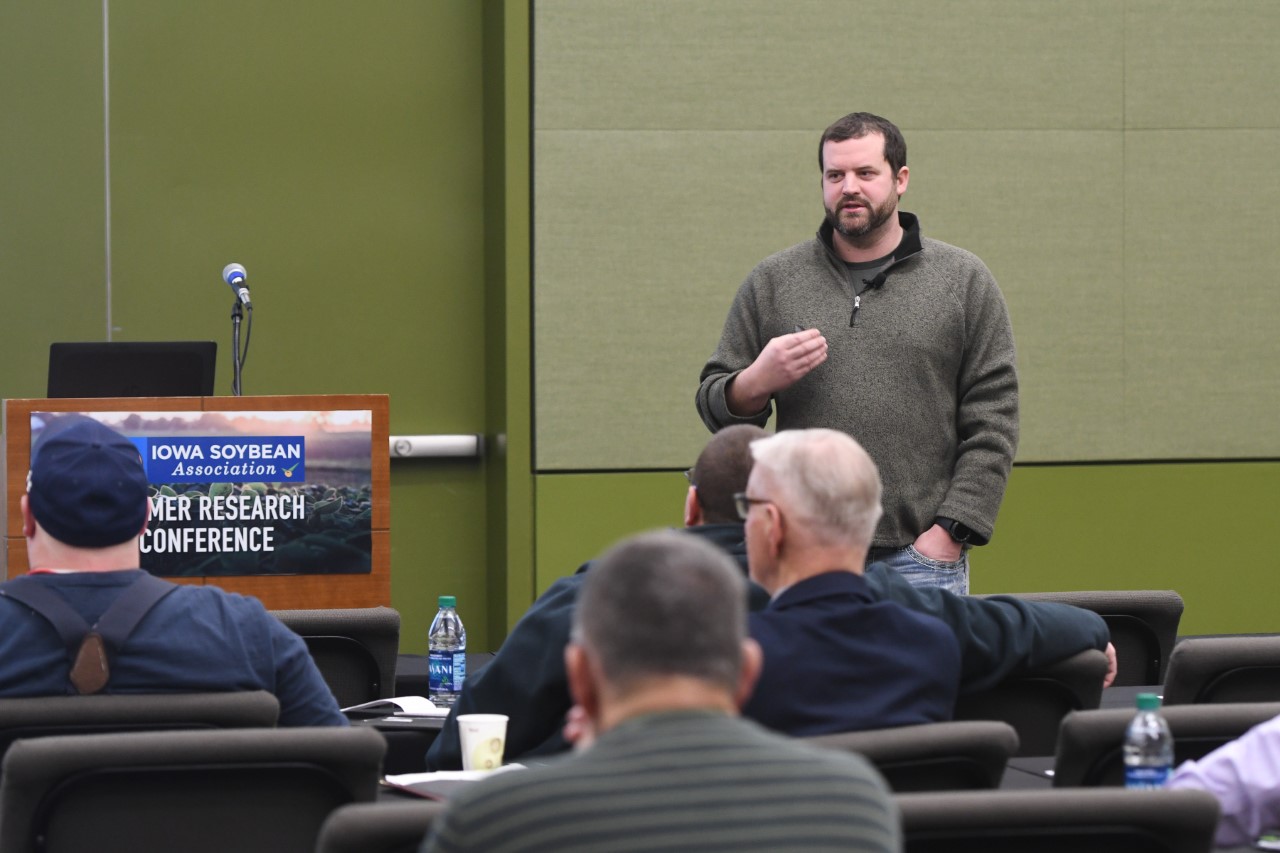
Steve Killpack speaks during the 2018 ISA Farmer Research Conference in Des Moines. He says it is important for farmers to understand the best ways to apply the layers of data they accumulate. (Photo: Joseph L. Murphy/Iowa Soybean Association)
Using data to unlock field profitability
December 28, 2020
While big data plays an important role in Iowa soybean farmer decision-making efforts, field-level data may help them unlock more profitability opportunities.
The Iowa Soybean Association (ISA) featured this approach in a Dec. 4 webinar titled “Opportunity, Profitability and Results: A Winning Combination.” Steve Killpack, ISA farmer member and founder of Accumen Agronomics, said the approach can drive better decisions.
“On my farm, I wanted to know where we are making and losing money based upon the practices we are using,” he explained. “I want to be environmentally friendly and simultaneously do everything I can to influence our profitability.”
According to Killpack, part of the struggle for farmers today is the understanding the best ways to apply the many layers of data coming from the farm. Big data can help farmers identify the starting points to work with, but your data will help you implement big changes to help you become more profitable.
He added, “Your data is the key to unlocking the profitability for every acre of your fields.”
Key questions and areas to consider
Killpack challenges farmers to be seeking answers to four questions and to do so annually:
- Do you feel you are maximizing your profitability on every acre?
- Do you feel you are as efficient as you can be regarding inputs?
- Do you know where you are making and losing money in your fields?
- Would you change anything about your current farming practices to help strengthen profitability?
Accumen Agronomics uses yield map information to create detailed maps that address three main management areas: seeding rate, fertility, and nitrogen.
Seeding recommendations play a large role in increasing profitability. “We’ve focused seeding rate recommendations and driving return on investment on a per-seed basis,” said Killpack.
Nitrogen use efficiency helps farmers understand environmental risks and rewards associated with cropping systems. Killpack’s business creates nitrogen mineralization maps which ties to maximizing nitrogen rates and producing more bushels from better management.
When it comes to fertility, Killpack reminds farmers to consider crop and budget issues. “We need enough money to justify our fertility budget,” he said. “Areas of overapplication and underapplication can be costly and negatively impact yield and the environment.”
Profitability found in all fields
Increased profitability can be found in both high and lower-earning areas by adjusting practices.
For example, in lower-earning areas is managing plant populations, Killpack suggests considering lower seeding rates; optimizing fertility to maximize yield and profitability by slightly decreased phosphorus and potassium application levels; and managing nitrogen inputs by increasing rates in these lower-yielding areas.
On the other side of the coin, profitable fields can also offer opportunity for savings. Killpack says it’s important to apply the same questions and consider adjustments. Seeding rates may remain the same but increases in phosphorus and potassium and decreases in nitrogen inputs may be necessary.
He warned, “Some of the best producing areas are some of the riskiest areas for nitrogen loss.”
Killpack’s calculations and recommendations are focused on creating tools to help farmers make better decisions. He emphasized that validation to all management recommendations and decisions is key. Any data management system must clearly determine if profitability goals are being met.
“Everyone has different goals and profitability objectives. We all live in a different framework,” he said. “For our company, we want to empower people to have resources to make decisions and tweak things that are impactful on their operations.”
Watch the webinar
Back